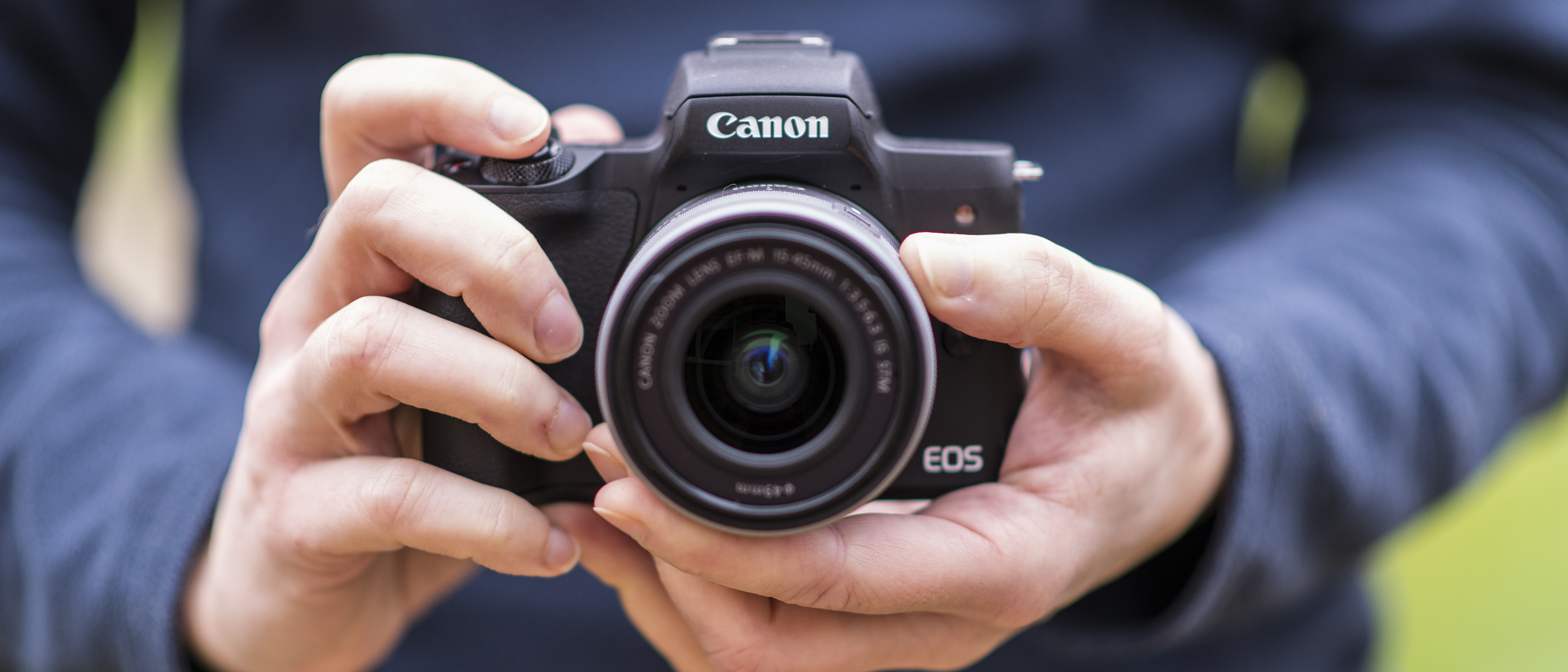Why you can trust TechRadar
Performance
- Decent burst shooting speeds
- Large and bright EVF
- Battery life could be better
Thanks to its DIGIC 8 image processor, the EOS M50 can shoot at up to 10fps in Single AF mode, and should you want to track your subject using Continuous AF this drops to a still very strong 7.4fps.
The electronic viewfinder on the M50 is also very good: the refresh rate delivers a smooth display, while the decent magnification means it doesn't feel too cramped. As we've found on other Canon cameras, from compacts to DSLRs, the touchscreen interface on the rear display works well. It's very responsive, and swiping to scroll through images is a breeze, while tapping to adjust the AF point works a treat.
The built-in Image Stabilization (IS) system on the supplied 15-45mm lens works well (Canon doesn't generally use in-body IS systems), although we'd recommend setting the camera to auto ISO or increasing the ISO manually in low light to reduce the risk of camera shake – the f/6.3 maximum aperture at the long end of the zoom is a stop slower than a lot of rivals, which means there's an increased risk of camera shake as longer shutter speeds will be required to obtain a good exposure.
The battery life of the EOS M50 is a little disappointing. It's just 235 shots, so you're probably going to want to get a second battery if you're planning on shooting for extended periods.
Image quality
- Images display very good detail
- Noise nicely controlled
- Good dynamic range enables recovery of detail
The 24.2MP APS-C sensor at the heart of the EOS M50 delivers clean and crisp images. You should have no issues producing decent-quality A3+ prints from the images you capture, while you should be able to get away with some pretty serious cropping if needed thanks to the densely populated sensor.
The sensor also delivers very good low-light performance, with noise well controlled even at higher ISO settings. Raw files hold up very well even at ISO 6400, with minimal luminance (grain-like) noise and hardly a sign of any chroma (color) noise.
The EOS M50 also puts in a solid performance when it comes to dynamic range. While not quite offering the same latitude as more advanced cameras when you're processing raw files, for the price it puts in one of the best performances going, enabling you to recover a good amount of otherwise-lost detail.
Sign up for breaking news, reviews, opinion, top tech deals, and more.

Click here to see the full-size image

Click here to see the full-size image

Click here to see the full-size image

Click here to see the full-size image

Click here to see the full-size image
Current page: Performance and image quality
Prev Page Build, handling and AF Next Page Verdict and competition
Phil Hall is an experienced writer and editor having worked on some of the largest photography magazines in the UK, and now edit the photography channel of TechRadar, the UK's biggest tech website and one of the largest in the world. He has also worked on numerous commercial projects, including working with manufacturers like Nikon and Fujifilm on bespoke printed and online camera guides, as well as writing technique blogs and copy for the John Lewis Technology guide.
